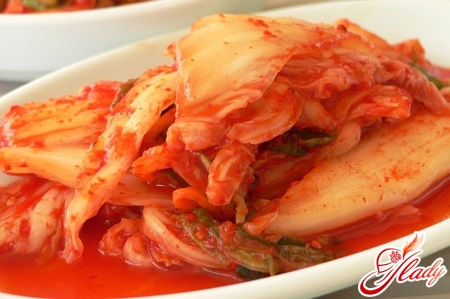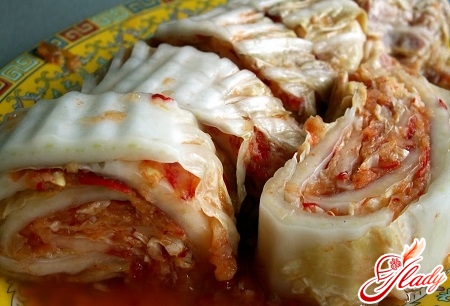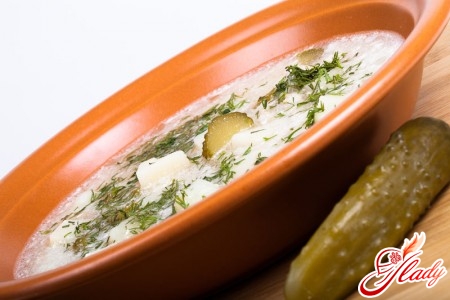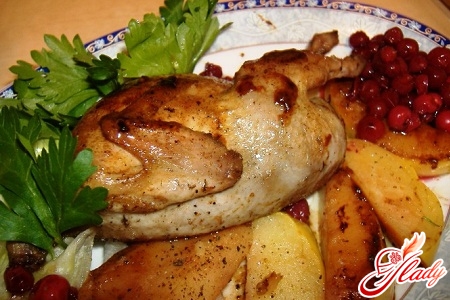
Kimchi is a national Korean snack.The recipe for the correct preparation of this dish is not widely known. In Korea, kimchi is prepared only from Chinese cabbage. However, in Russia it has long been adapted to European tastes. Now you can try the dish not only from Chinese cabbage, but also from potatoes and eggplants. Of course, each recipe is good in its own way, but Korean cuisine, as a rule, adheres to the original version.
Kimchi with Pekinese cabbage, basic recipe
All ingredients here are taken to taste.The main component is Chinese cabbage, in Korea it is called "pyache". So, the cabbage is cut in half and placed in some deep container, for example, a large saucepan. After that, it is poured with heavily salted water (brine). The brine should be taken so that the cabbage is completely covered with it. A press is placed on top. In this form, the dish should stand for 2 days. After some time, the leaves are thoroughly washed, and the brine is drained. Now "pyache" is ready for further use. Any kimchi recipe necessarily involves the preparation of a hot paste, which will be used to grease the salted cabbage. Before preparing it, it is advisable to wear gloves so as not to burn the skin of your hands. So, garlic and hot pepper are ground in a meat grinder, and the latter should be almost twice as much. Then a little salt is added to the mixture and mixed well. Then each cabbage leaf is lightly coated with the prepared paste. Kimchi is almost ready, all that remains is to put the cabbage in a tightly sealed container (for example, a jar) and let it sit for a couple more weeks in a cool place. This recipe allows you to keep "pyache" at room temperature. However, in this case, you should take into account that the oxidation process will go much faster. So, if you need the snack urgently, the process can be accelerated.
Kimchi with Peking cabbage with more complex pasta
This recipe is a bit similar to the first one, but hasits own characteristics. First of all, it is distinguished by a clear dosage of components in percentage terms. By changing the prescribed norm of products, you can get a completely new recipe that is not at all similar to kimchi. Another difference is in the more original and complex paste. Ingredients:
- Chinese cabbage - 85.6%
- Red pepper - 2.9%
- Chinese radish - 2.8%
- Salt - 2.5%
- Shrimp paste - 1.8%
- Green onions - 1.5%
- Sugar - 0.8%
- Ginger - 0.7%
Preparation:This dish is more difficult to prepare, but the resulting kimchi has a more original taste. Take a head of Chinese cabbage and chop it coarsely, into pieces of about 2-3 cm. Then they are kept in a saline solution for 2 to 7 hours. When the "pyache" is salted enough, it is taken out of the brine and washed with cold water. Now we move on to the main thing that distinguishes this recipe from others - to the preparation of spices. Their composition may vary slightly, but the main ingredients must always be present. These include: Chinese radish (can be replaced with any other), finely chopped garlic, chopped red pepper, finely chopped green onions, freshly chopped ginger, salt, sugar and the most important ingredient that distinguishes this dish from ordinary sauerkraut - shrimp paste. Shrimp, despite the name, are not the only ingredient in the paste. It consists of an assortment of fermented seafood. All the spices are mixed with "pyache" and left for about 2 days at a temperature slightly below room temperature. The most delicious snack is ready!









